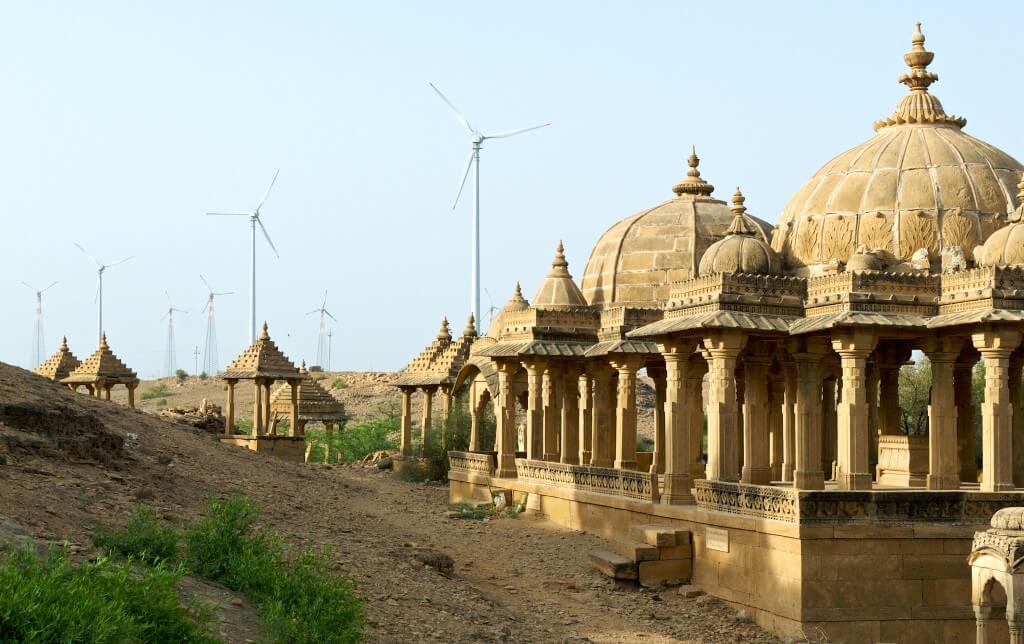As India prepares to meet its increasing energy demands, which will likely double by 2030, the government has set a path towards ambitious renewable energy targets of 175GW by 2022, and likely 350GW by 2030. These targets are good for the Indian economy, the climate, and the 400 million Indian citizens who currently lack access to electricity.
Raising enough finance will be an essential piece of achieving these targets. Currently, it’s estimated that reaching the 2022 targets would require USD $160 billion.
Domestically, India faces a shortage of available capital for renewable energy projects. The Indian government has stated several times, most recently at the Paris climate talks, that, in order to meet these targets, a significant portion of funding will need to come from foreign sources.
At the same time, the governments of developed countries are willing to provide some of this capital, but would also like to leverage their public-sector spending, by attracting private investment to renewable energy. Indeed, greatly scaling up investment from the private sector will be essential to mobilize the full amount of capital needed to meet India’s renewable energy targets.
However, private foreign investment in renewable energy projects in India faces two key barriers: currency risk and off-taker risk.
To address both of these major risks, there are potential short-to-mid-term solutions that can both drive private foreign investment and leverage public finance from Indian and foreign development institutions and governments.

Photo credit: Flickr user Daniel Bachhuber
A Currency Hedging Facility to mitigate currency risk
Because currency exchange rates can be volatile, when a renewable energy project is financed by foreign capital, it requires a currency hedge to protect against the risk of currency devaluation; otherwise, foreign investors risk losing their gains due to depreciations in the Indian currency. However, longer-term currency hedges (beyond three to five years) are not easily available in the Indian market. In addition, market-based hedging in India is expensive (for example, 7% or higher for a ten year hedge), ultimately making foreign financing just as expensive as domestic financing.
One solution to currency risk could be currency hedging sponsored by the Indian government. Recent analysis by Climate Policy Initiative shows that a government-sponsored currency hedging facility, if designed appropriately, could not only provide long-term hedges (ten years) but also reduce the hedging costs by up to 50%. To do so, this standby facility, in order to reach India’s sovereign credit rating, would need to be approximately 30% of the hedged capital.
A Payment Security Mechanism to mitigate off-taker risk
The second major barrier to foreign investment is off-taker risk. In India, the major off-takers are the public sector electricity distribution companies (DISCOMs), which are in a precarious financial situation. Because of the financial state of DISCOMs, investors are concerned that the DISCOMs might default, jeopardizing their investment.
One solution to mitigate off-taker risk could be a payment security mechanism which would cover payments to investors in case of potential defaults. This would significantly reduce the perception of default risk and encourage foreign investment, thereby improving the availability of foreign capital. Climate Policy Initiative’s analysis shows that payment security mechanisms would need to be approximately 7% of capital expenditure to cover defaults over one year.
How the Indian government can help
The Indian government is in the best position to manage both currency and off-taker risks. For currency risk, macroeconomic conditions are key drivers of currency movements, and government policy can influence macroeconomic conditions. For off-taker risk, the DISCOMs are public-sector entities, essentially supported by the government.
Therefore, the Indian government and public finance should play a significant role. The Indian government can use some of its own money to fund the currency hedging facility as well as the payment security mechanism – for example, from the National Clean Energy Fund, or from the expenditure budget.
How international governments and development institutions can help
The international community can pitch in by not only supporting technical assistance but also contributing funds to these facilities. For the currency hedging facility, there may also be gains from diversification by creating the facility for multiple currencies, given that currency movements will likely offset each other.
The international community can also help by creating political will around this process of creating these facilities. This would require key engagement from government stakeholders from both developed countries and developing countries, in addition to development finance institutions like the World Bank, Asian Development Bank and the Asian Infrastructure Investment Bank.
As we move forward with the historic climate agreement that emerged from COP21 in Paris, there has never been a better or more important time to develop and implement the solutions that can drive the required finance to India’s renewable energy targets.
The Indian government, governments of other nations, development finance institutions, and private investors all have key roles to play in moving these targets from dreams to reality.

